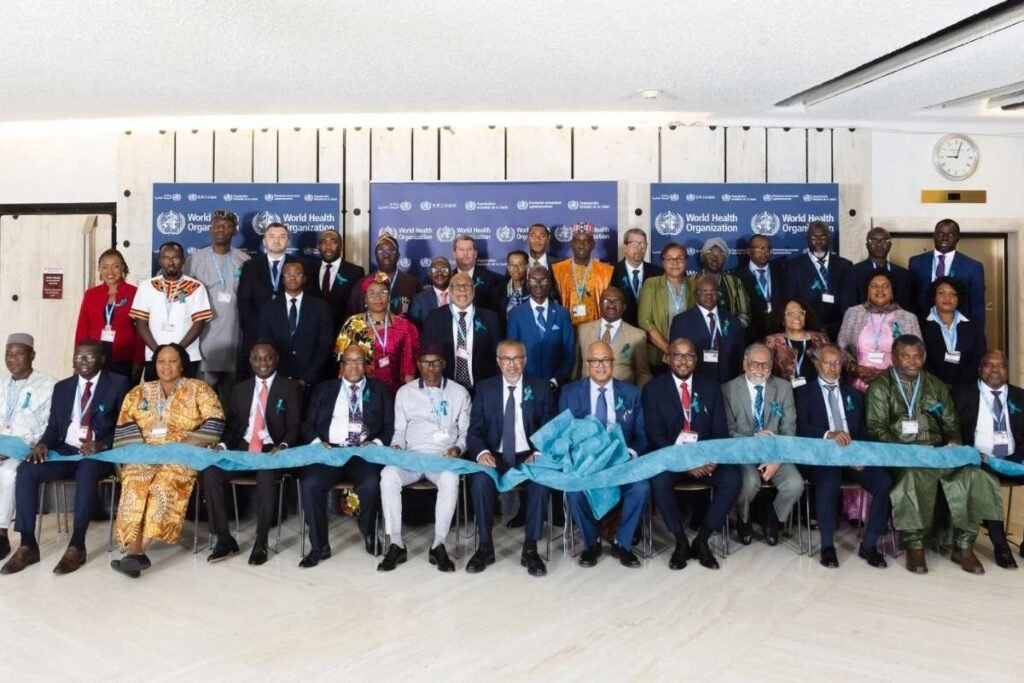The World Health Organization (WHO) today marked the first-ever World Cervical Cancer Elimination Day, a milestone endorsed by the World Health Assembly to intensify global efforts to end cervical cancer, one of the most preventable cancers in women. Cervical cancer claims over 350,000 lives annually, despite effective prevention, screening, and treatment tools.
The day emphasizes WHO’s global targets, known as the 90-70-90 goals: vaccinate 90% of girls against human papillomavirus (HPV), screen 70% of women for cervical cancer, and treat 90% of those diagnosed. These targets form the foundation of global cervical cancer elimination strategies.. “Progress toward eliminating cervical cancer is no longer a distant dream,” WHO Director-General Dr. Tedros Adhanom Ghebreyesus said. “Countries are increasingly expanding HPV vaccination and screening programs” that directly contribute to cervical cancer elimination.
First World Cervical Cancer Elimination Day
World Cervical Cancer Elimination Day raises awareness and mobilizes resources to strengthen the global movement for cervical cancer elimination. Health authorities, non-governmental organizations, and governments are hosting events, awareness campaigns, and vaccination drives to encourage participation and adherence to preventive measures.
Gavi, the Vaccine Alliance, reported that its target of vaccinating 86 million girls with HPV vaccines by 2025 has already been achieved, a major milestone for global cervical cancer elimination efforts.
Global HPV Vaccination Surge
Several countries have launched large-scale vaccination campaigns. Pakistan’s initiative has reached over 9 million girls, marking the largest single HPV vaccination effort ever. Sierra Leone and Liberia are vaccinating more than 1.5 million girls combined. Angola, China, Cuba, Ghana, Nepal, Tajikistan, Tunisia, and Rwanda have also rolled out extensive HPV vaccination programs targeting adolescent girls.
In addition to vaccination, Malaysia is promoting self-sampling HPV tests through survivor-led campaigns to increase screening rates among women. South Africa and Nigeria reaffirmed their leadership by investing in prevention programs and advocating for global collaboration. Spain and Unitaid are supporting HPV prevention initiatives in Africa and the Eastern Mediterranean region.
Countries Accelerate Prevention Efforts
WHO officials noted that combining vaccination, screening, and treatment is key to achieving the 90-70-90 targets. Countries making rapid progress demonstrate that cervical cancer can be eliminated as a public health threat within decades if coverage continues to expand.
Dr. Princess Nothemba, WHO’s lead on reproductive health, said, “Eliminating cervical cancer requires coordinated efforts across countries, health systems, and communities. Today’s actions send a clear message: prevention saves lives.”
Cervical cancer primarily affects women in low- and middle-income countries, where access to vaccines, screening, and treatment remains limited. WHO continues to provide technical guidance, training, and support to strengthen health systems and expand reach.
The global effort also highlights innovations in prevention, such as self-administered HPV tests and community-based awareness campaigns. Health authorities encourage families to participate in vaccination programs and regular screenings to reduce the disease burden.
With international collaboration and sustained commitment, WHO aims to eliminate cervical cancer as a public health problem by the end of the century. Public health experts stress that increasing vaccine coverage, improving screening programs, and ensuring timely treatment remain essential steps to achieving this goal.
Source: https://edition.cnn.com/2025/11/17/health/cervical-cancer-hpv-vaccine-gavi-funding









